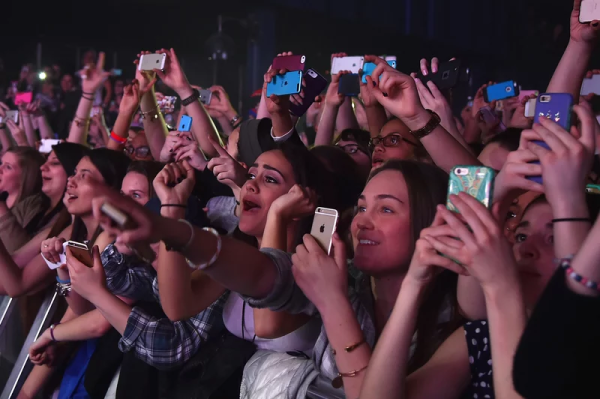Op-Ed: End performative activism to create real change
Every scroll I make, I’m met with black posts with the hashtag: blacklivesmatter. I move over to Twitter to find that my Instagram home page wasn’t alone in all this: an estimated 28 million Instagram users participated in Blackout Tuesday, meant to protest racism and police brutality in the wake of the murders of George Floyd, Breonna Taylor, and Ahmaud Arbery. In addition to solving my confusion about my entirely blacked-out Instagram home page, I was met with countless tweets criticizing the performativity of the “blackout” happening on Instagram.
With some hesitation, I decided to post an infographic on my Instagram story, addressing why I wasn’t participating in the blackout. The post addressed why the black screens weren’t helpful and how they drowned out useful informational posts with the black lives matter tag. However, after ten heart-pounding minutes, I decided to delete the post, scared of the backlash I might receive for not posting a black screen.
Since the Summer 2020 protests, the term performative activism has become a buzzword for critics of young people posting about social injustices and other social issues they want to be made apparent. Although I agree that performative activism is a huge setback to social movements, that doesn’t mean we should disregard and abandon all social activism Instagram posts.
Even before this recent flood of performative activism, the general idea has been around since the 90s. In 1995 the term “slacktivism” was coined, criticizing online users for not using their platform effectively to foster change after the Kony 2012 Cover the Night Campaign. After a 29-minute documentary about the wanted Ugandan warlord, Joseph Kony went viral, efforts to mobilize young people through the internet seemed to be an attainable goal. However, the campaign’s goal to plaster Kony’s face everywhere failed. Suddenly the online communities enthusiasm to join in the movement was nowhere to be found and thus, the term slacktivism was born.
The line between actual beneficial and useless posts concerning social issues is typically blurry mainly because of the subjectivity of it all. However, I can wholeheartedly say that aesthetically pleasing pastel backgrounds with a pretty font saying “defund the police,” is on the useless side of the line.
Drawing a line is so hard, especially on social media because of how profiles are catered to represent who the user is. Even if posting an objectively beneficial post for an issue the user is passionate about, they are bound to be met with criticism about being a performative activist because a social media profile is always going to be associated with the end goal of gaining social capital, even if the user claims not to care about followers, likes, and shares. Posting on a profile meant to be the user at their best and what they want the world to see may come across as virtue signaling—”the action or practice of publicly expressing opinions or sentiments intended to demonstrate one’s good character or the moral correctness of one’s position on a particular issue.” Critics ask, “Posting an infographic instead of a selfie? They must just want the world to see how woke they are.”
On the other hand, there is a multitude of examples of blatant virtue signaling all over social media. On Facebook, users can change their profile pictures to be overlaid with Black Lives Matter banners to show their friends they support the movement. But what else does that overlay do? Nothing. The profile pictures are the epitome of virtue signaling and modern performative activism; it does nothing but give users the opportunity to show off their pristine morals.
Not just individuals are guilty of riding the performative activism train. In 2018, Nike launched a campaign with ex-NFL star Colin Kaepernick, who was released from the San Francisco 49ers after kneeling during the National Anthem to protest police brutality and racism in the United States. Nike’s collaboration with Kaepernick signified their solidarity with Kaepernick’s protest but public records show that in 2019 less than 10% of the companies’ 300-plus vice-presidents worldwide were black. This upsetting statistic exposes the emptiness in performative activism shown by the company. While the brand prides itself on its support against racial injustice in the United States, it continues to uphold the exact inequality that Kaepernick kneeled for in their workplace.
Colin Kaepernick protesting against police brutality that got him removed from the team versus the 49ers flying a black lives matter flag
The solution to the performative activism problem isn’t crystal clear, but I think we can take the painfully useless posts out of the picture as the first step towards making social media an even stronger catalyst for change. The performative-filled summer 2020 was an important stepping stone for online activism because it pointed out what didn’t work very quickly. Black screens, don’t save black lives. Pretty fonts don’t explain complex topics. It’s reasonable to criticize these posts, but it is important to recognize that these setbacks would have never been brought to light had they been for performative activism. On the other hand, useful activism doesn’t have to be on a massive scale. Joining local social activism organizations, campaigning for politicians that share similar beliefs, and writing to current representatives are all forms of activism that make a way bigger difference than posting a black screen.
Your donation will support the student journalists of Carnegie Vanguard High School. Your contribution will allow us to cover our annual website hosting costs and fund field trips, competition fees, and equipment. We appreciate your support!













Nina Nguyen • Dec 9, 2021 at 2:17 pm
I really loved this article and found relation in the opinions, especially the topic on black squares.
Atahan Koksoy • Dec 9, 2021 at 1:44 pm
I think this is a very interesting article. You leave it up to interpretation, and present both sides, which is a great idea.
Brooke Ferrell • Dec 9, 2021 at 1:35 pm
This story is really good! I like how you look at the complexities and history of the issue–I didn’t know about how old “slacktivism” was!
hannah mansour • Dec 9, 2021 at 1:32 pm
I agree with you. Especially when I have posted an infographic countering about how something is “performative”, I also deleted it like 15 minutes later bc/ I was scared of getting hate.
MyTran Vo • Dec 9, 2021 at 1:29 pm
I agree with this op-ed and i liked how you added your own opinions with along with critics and how there can be limitations